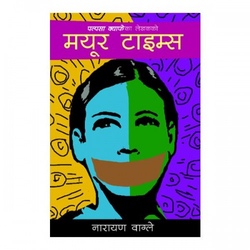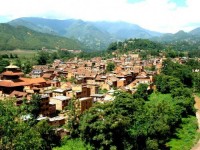Mayur Times by Narayan Wagle
The second book by journalist-cum-writer Narayan Wagle, Mayur Times depicts the story of the ongoing conflicts in the country, especially in the Terai region and most of the other deprivation and insecurity characters of the post-insurgency period. Written by one of the well-established journalists of Nepal, Mayur Times is one of the most popular Nepali novels written with insurgency as its theme.
The book which held the record of selling 10,000 copies within second week of its release depicts the story of Parag Yadav, who, although was born in Terai, grew up in the hills, and her friend Lisara Pun. These two protagonists of the novel are brave and passionate who take up the responsibility of editing in Mayur Times, a paper that is trying to express the crimes and lack of morality in the country. The book not only highlights the story and life of these two characters and their environment but also the adverse condition of the country during the conflict era. Also, another important character in the novel is Mahima, Parag‘s teacher who becomes the prey of the Terai conflict. This character also represents the conflict in ethnicity in our country through the author’s perspective which makes her an important character in the story. She suffers through a lot and the worst happens when her husband is murdered and all her properties are seized along with being fired from her job and made to leave Terai.
The novel has tried to cover the contemporary socio-economic issues like misuse of manpower and resources in the government sectors and also cheating of migrant workers by the manpower agents. The novel also points towards the increasing division between people in hills and Terai. However, despite its coverage of important social issues, the book lacks naturality and appears to be more spicy and filmy.
Although the novel claims to be the story of the journalists by a journalist, it fails to cover many issues and crucial challenges faced by the Nepalese journalists. There are also some scenes which seems to be quite unbelievable and the book also seems to ignore the rule of grammar, however, despite its shortcomings, this book by the author of Palpasa Café is worth a read.







